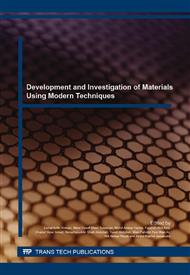p.165
p.170
p.175
p.180
p.185
p.191
p.197
p.202
p.207
On Using Factorial Fractional Design to Fabricate Porous Alumina Scaffolds for Bone Tissue Engineering (BTE)
Abstract:
The porous scaffold has a weakness in terms of compressive strength. This is due to the porosity that is inversely proportional to the strength of the porous scaffold. Greater the percentage of porosity will decreasing the compressive strength. However, this compressive strength can be improve by controlling several factors (i.e., number of PU pores, composition ratio of slurry, percentage of binder and number of coating process). In general, fabrication porous alumina by conventional process was takes a longer time and consuming high cost. In addition, the conventional process could not explain the interaction relationship between all factors. Therefore, experimental design using Minitab 16 is applied to investigate the factors’ interaction. From the analysis, a combination of composition ratio and number of coating were found to have a significant impact to increase the compressive strength (> 2MPa) while others are less significant.
Info:
Periodical:
Pages:
185-190
Citation:
Online since:
January 2016
Keywords:
Price:
Сopyright:
© 2016 Trans Tech Publications Ltd. All Rights Reserved
Share:
Citation:


